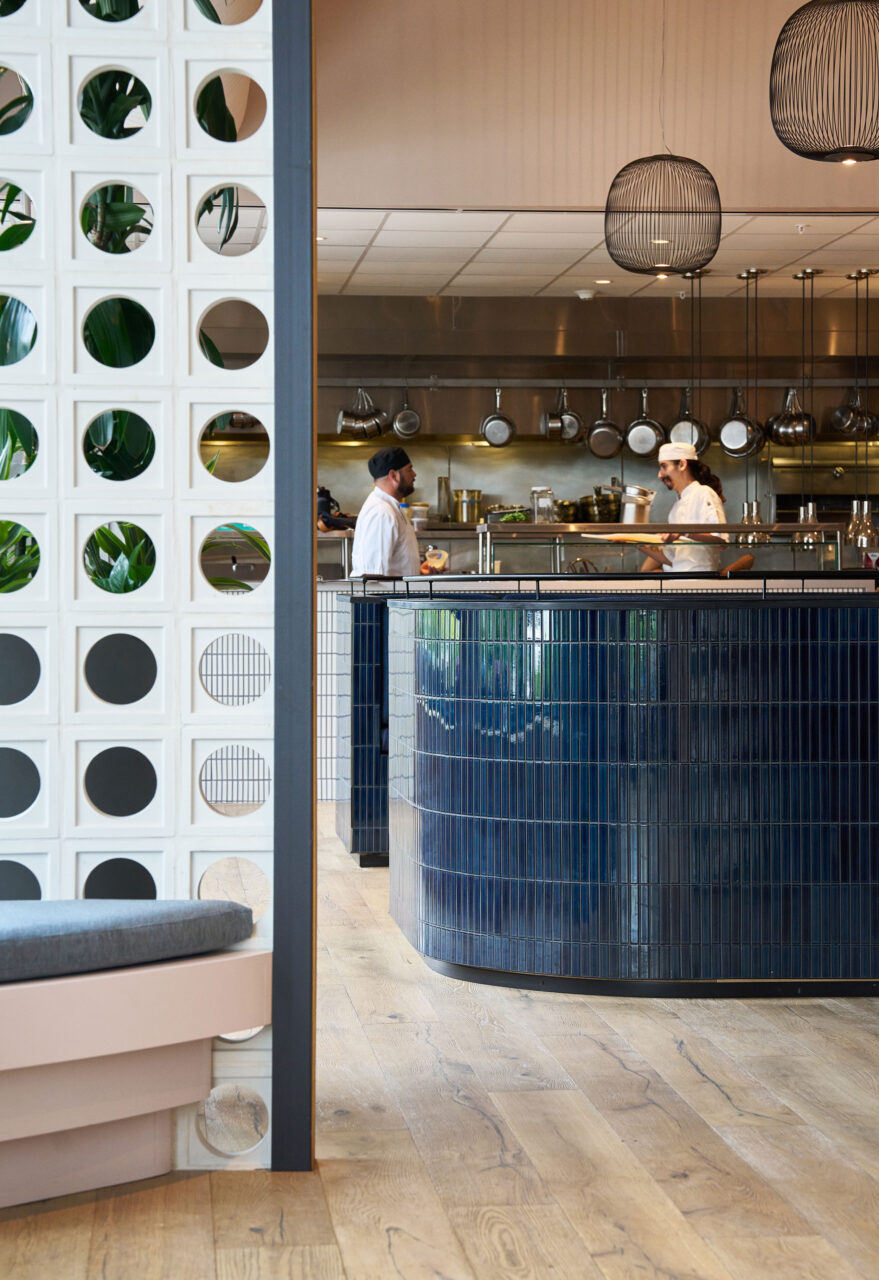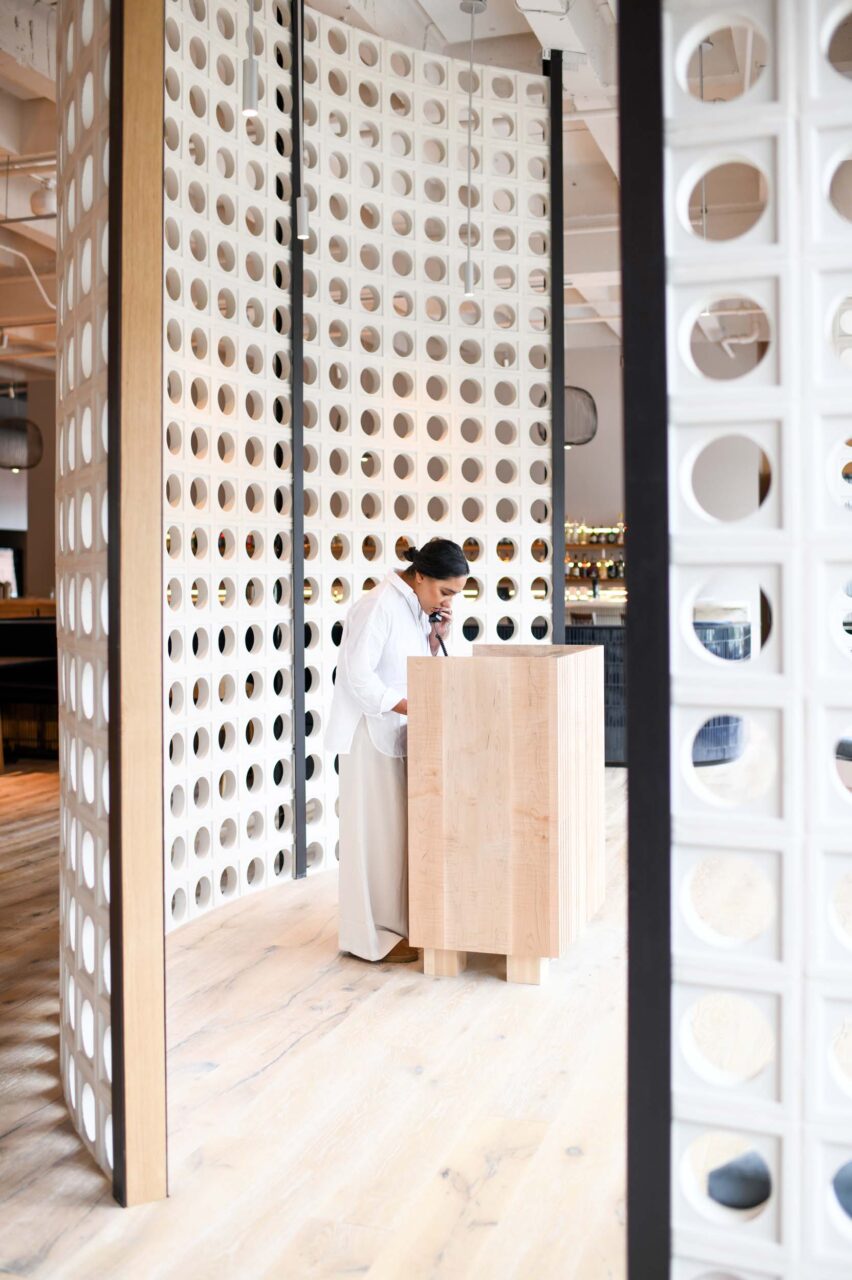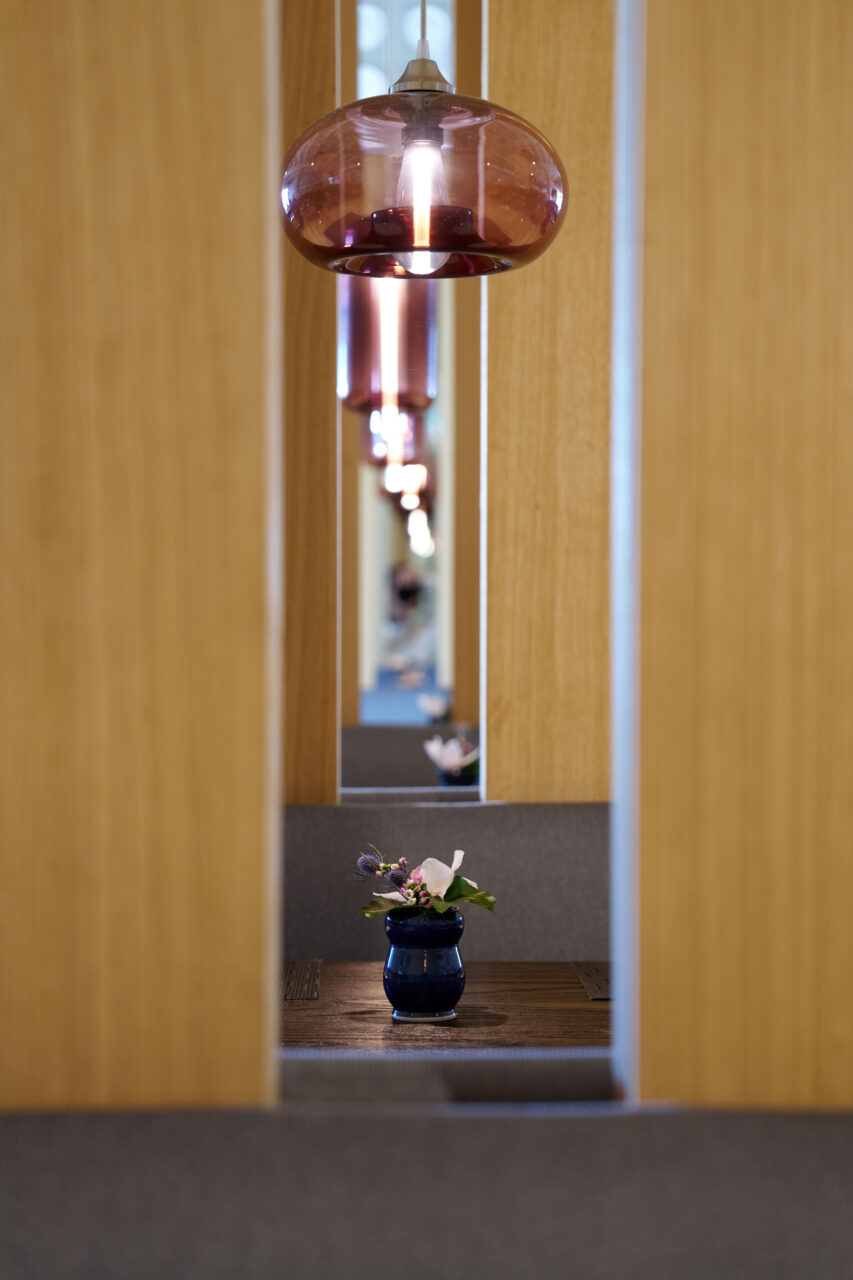Over time, Rice Village, an eclectic, tree-lined Houston shopping center that originated in the late 1930s and ’40s, has grown into a beloved (and periodically down-at-the-heels) destination for nearby residents, hobbyists, college students, home-goods shoppers, moviegoers, and diner patrons. Beginning in 2018, public space upgrades like covered outdoor seating, landscaping, and widened sidewalks have attracted new upscale shops and restaurants to open amid decades-old favorite haunts, bringing a renewed vibrancy to the district.
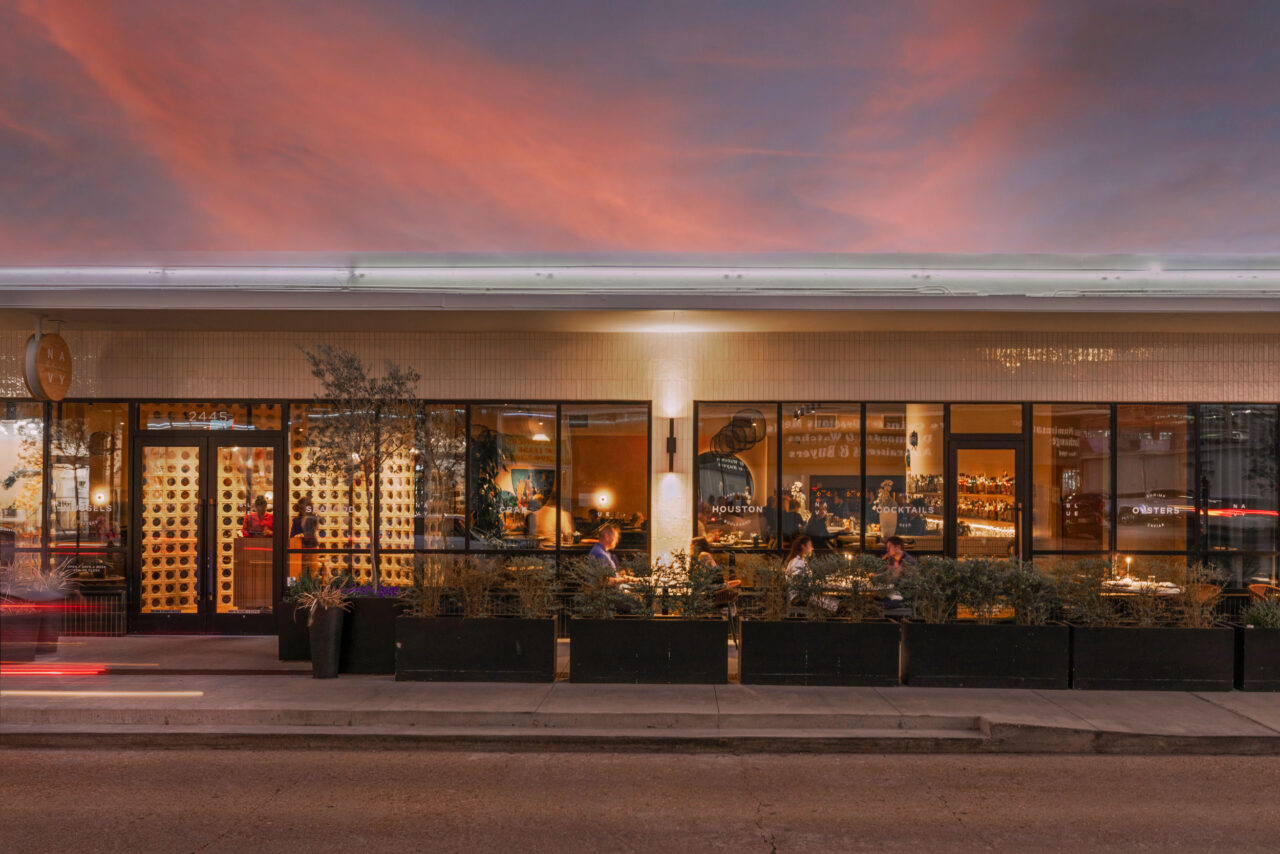
Navy Blue, a new seafood restaurant concept helmed by Aaron Bludorn, a veteran of New York’s Café Boulud and operator of his eponymous restaurant in Houston, opened late last year. The eatery represents the latest entry in the Village’s refashioning into a fancy Houston destination. Designed by Austin-based brand consultancy and design studio FÖDA in close collaboration with Gensler, the restaurant has transformed a former food hall into an expressive dining room. (FÖDA also worked with chef Bludorn on the design of his prior venture, his first in Houston.)
Upon entering, diners are greeted by an oyster shell–inspired reception area perforated with circular apertures, in accidental homage to Jean Prouvé. Curved bays of deep blue Japanese tile and tall white oak planks differentiate upholstered banquettes and tables in the dining room, which is served by a show kitchen, from the seating areas around the bar; both are surfaced in white Japanese tile.
The design leaves the concrete structure exposed. Above, the ducting and concrete are offset by jellyfish-like wire lamps. Glimmering tiles on the exterior facade and glowing chartreuse tiles in the bathroom areas strategically animate the walls. Throughout, subtle elements (like hidden mirrors to accentuate handblown glass pendant lights in the booths) and discreet space planning (to ease natural circulation in the dining room and offer the servers view corridors while concealing them from guests) afford a refined dining experience.
“The working title for this project was Black Sands,” Jett Butler, founder and chief creative officer of FÖDA, told AN. (Prior to starting the office in 2003, he studied architecture.) “We used this prompt to avoid nautical kitsch; instead, we centered on that moment where the raw, visceral nature of the sea collides with the land.”
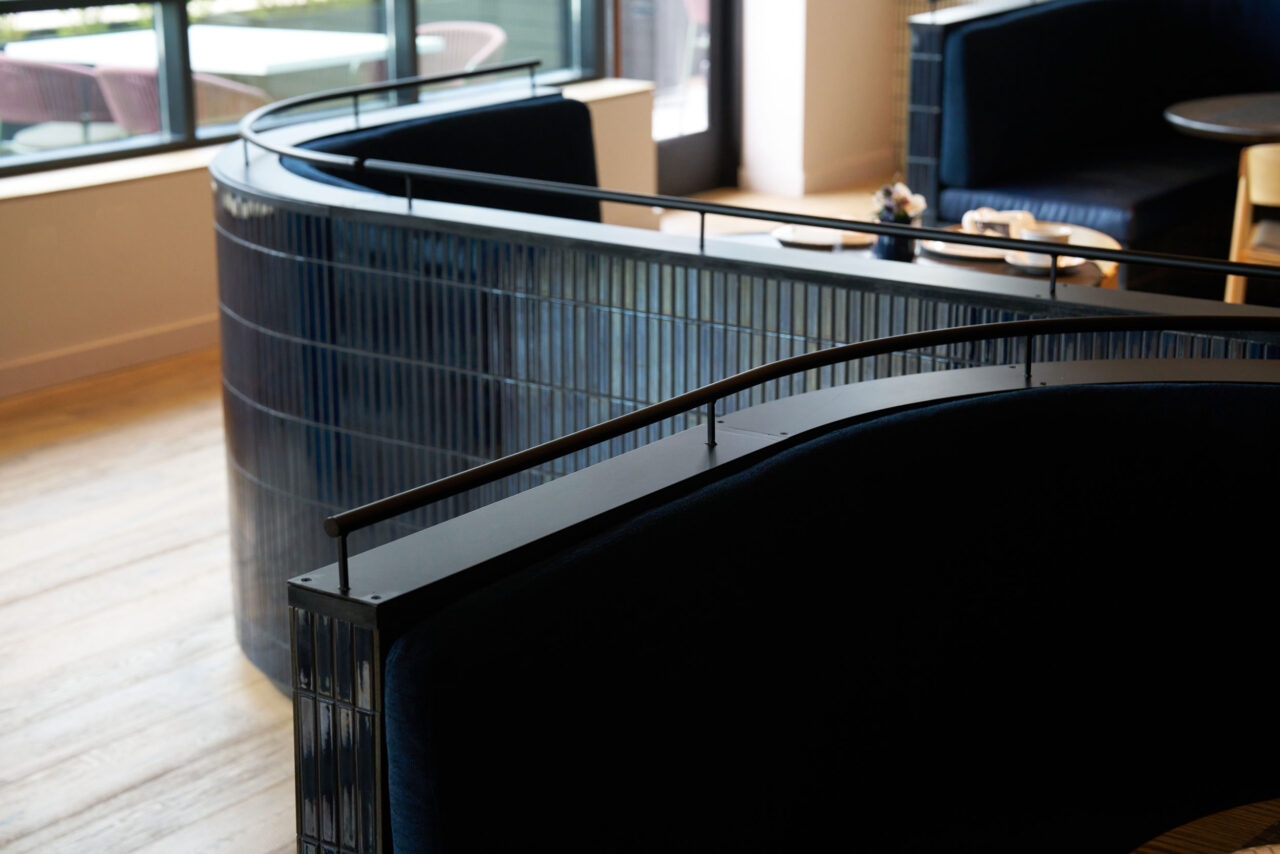
Butler continued: “The booths curl into one another in waves of tile, the frames of the oak center planes curve inward into themselves, breeze-blocks emerge as a cylinder with circular perforations that cast layered ellipses on the floor, the flowing script of the menus is hand drawn and spaced with nautilus shell ratios…. The room is simple, the gestures are spare. Yet Navy Blue is loaded with subtle symbolism.”
The concept—and the cuisine, of course—has already won over critics: Writing in Texas Monthly in March, Patricia Sharpe proclaimed that “Navy Blue is the best restaurant to open in Texas in the past year.”

